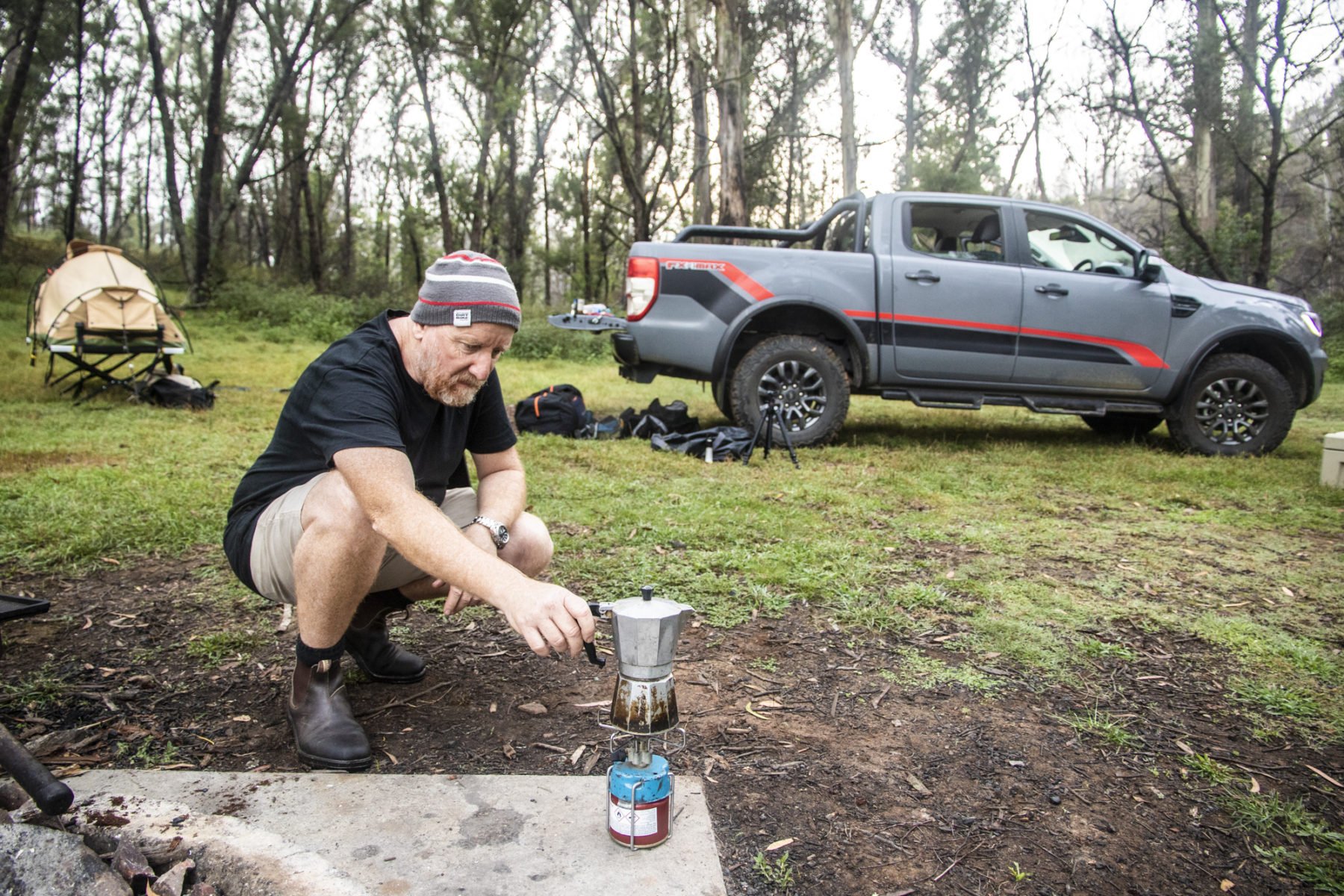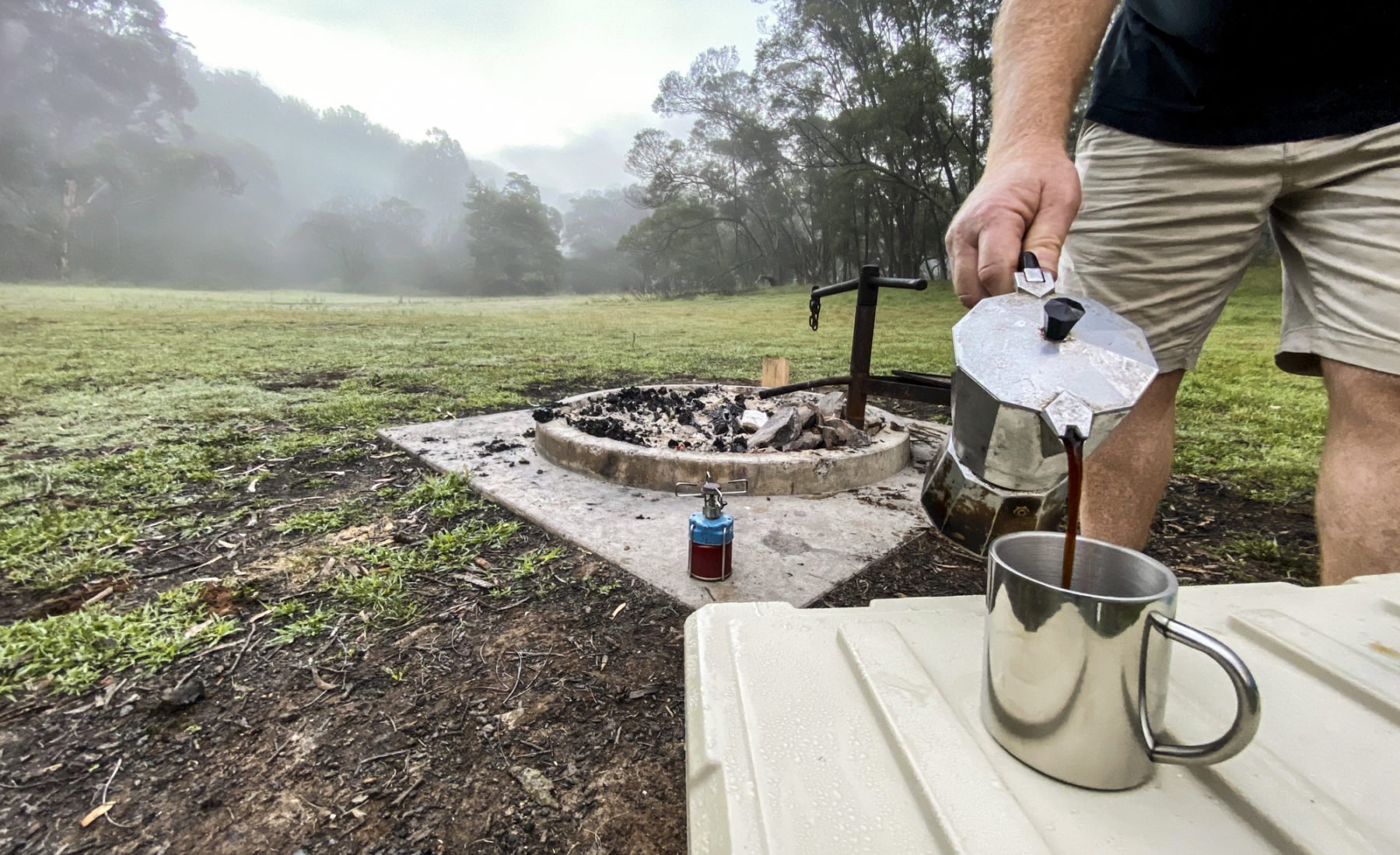Bialetti Moka Express: We test the camp coffee-brewing icon

Nothing beats a good coffee when you’re camping. An exceptional cuppa may seem like the impossible dream for some when you’re out in the wilderness. Indeed, for this reviewer, replicating a favourite barista’s brew when out bush always seemed out of reach. Well, it did, until this late-to-the-party reviewer discovered (through fellow journalist workmates), the answer to that dream has been around for close to 80 years, in the form of the Bialetti Moka Express.
Design
The Bialetti Moka Express (also known as a stovetop espresso maker) originated in Italy, with its inventor, Alfonso Bialetti, observing how pressure worked with his wife’s washing machine to clean clothes. Yep, a true story, with the original 1933 design the same as the one used in the Moka Express today. The original versions were made from aluminium, due to that metal being prevalent in Italy (there are now stainless-steel variants).
The Moka Express comprises three separate parts – or chambers: the base (which you fill halfway with water), the middle (where you put the coffee grounds) and the top, which is where, under pressure, the coffee ends up. With these three separate parts, the Moka Express is very simple in construction, and very robust – two of the main reasons it has become a favourite with vehicle-based camping coffee connoisseurs. The aluminium also ‘ages’, with a corresponding change in the flavour of the coffee that is produced.

The coffee is produced by heating the water in the base over a stove/burner, with the resultant boiled water producing steam that pushes water through the funnel to the coffee ground chamber above it. From here, more pressure – and the boiling water being absorbed by the coffee (which then expands) – results in the fully saturated coffee/water mix boiling up into the top ‘pot’ (chamber) where the resultant espresso coffee is then poured.
Yep, as mentioned earlier, it is a very simple process and it is this, plus the robustness of the unit and its relatively compact size that has seen these become near-essentials in a lot of camping kits.
In the field
A 4WD camping trip to Deua National Park, NSW, saw my co-traveller Dean Mellor’s 27-year-old Bialetti Moka Express (6-Cup model) put to good use in the mornings. The age of this particular unit had no bearing on how effective it was to use – and how beautiful the resultant espresso coffee was.

Filling the bottom chamber with water, adding the coffee grounds to the mid-chamber and then waiting for the tell-tale sounds of spluttering brew from the top chamber takes around five to seven minutes, before grabbing the heat-resistant handle and pouring. This 6-Cup model produces the equivalent of two big mugs’ worth of coffee; the ‘cup’ sizing Bialetti uses refers to an espresso cup-size, so if you have a crew of four regularly on your camping trips, we’d recommend either the 9- or 12-Cup Moka Express.
After use, it is important to ensure the three chambers of the Moka Express are washed and dried properly, but other than that, there is no maintenance needed. Indeed, another fellow journalist friend of mine has a Bialetti that is ticking over close to 40 years of reliable service!
The final word on the Bialetti Moka Express
It may seem slightly fiddly – or even extravagant – to use a coffee maker, rather than just go the instant-coffee route for your camp coffees but, really, for that extra 10 or so minutes it takes to brew up a cup of Joe in the Bialetti, we reckon it is well worth the time spent.
It had been around 10 years of scrounging a Bialetti-brewed coffee off my co-workers before I decided to get my own (a 6-Cup) and dedicate a permanent storage nook for it in my main camping box (the 6-Cup measures 165mm x 115mm x 220mm). Now, it’s just a matter of experimenting with brewing times, and the different flavours of available coffee, before I hit on the ultimate start to the day. Hell, I might even source the Mini Express model (1-Cup) as well, for my hiking and paddling adventures, to ensure I don’t suffer sub-standard coffee no matter where my morning begins!
With its robust construction, effective operation, and the fact that, more than likely, you’ll be using it to make coffee for decades to come, the Bialetti is a brilliant bang for your caffeine-addicted bucks addition to your camping kit.
RRP: from $40 to $140 (available in cup sizes: 1, 2, 3, 4, 6, 9, 12 and 18)
www.bialetti.com




